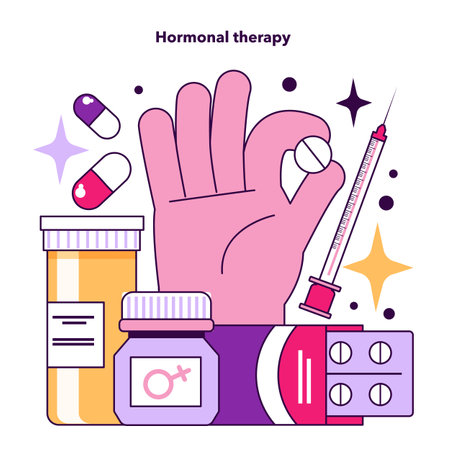Let’s Talk About Hormonal Therapy with Your Provider

Before working with the National Bleeding Disorders Foundation, I worked in reproductive healthcare helping a diverse group of women, girls, and people who have or had the potential to menstruate (WGPPM). I remember having a patient with a bleeding disorder who experienced extreme wait times for appointments and spent many hours on the phone before they could be seen by a provider who had a knowledge of bleeding disorders. At the time, I felt surprised that none of the other physicians at my practice had knowledge of bleeding disorders. Now that I have worked in this community, I understand why so many WGPPM feel frustrated when trying to obtain the care that they need.
As many WGPPM know, the hematologist is not who you see for menstruation issues, birth control, pregnancy, menopause, etc. Typically, these needs are addressed by an OB/GYN, or rather an obstetrician and/or gynecologist. I see many gaps in education on both sides of the exam room: OB/GYNs are not given much education on the varying bleeding disorders and how they affect WGPPM, and most WGPPM are not given much education about the different options for hormonal therapy. Hormonal therapy IS often the first solution to heavy menstrual bleeding, but oftentimes, the only option given is for oral contraception (OC’s or birth control pills). OC’s are, in fact, not the only option, especially for folks who have bleeding disorders.
It has been my mission for many years working at a reproductive healthcare clinic to inform and educate everyone about the need for hormonal therapy not just in WGPPM that are trying to prevent pregnancy, but also those whose menstrual cycles need managing. I especially love to empower people who are not happy about their current hormonal therapy to speak with their health care provider and make a change. The most important thing I have learned working in reproductive healthcare is that every single person reacts differently to each therapy option, and oftentimes, the best way to find out if a method works for you is to try it out yourself for a few months.
Here is a list of all the different types of hormonal therapies that lessen bleeding*:
- Combined Oral Contraceptives (contains estrogen and progestin) which are taken daily
- Progestin Oral Contraceptives (contains progestin) which are taken daily
- Progestin-Only Shot which is given once every three months
- Patch (contains estrogen and progestin) which is put on once a week
- Ring (contains estrogen and progestin) which is put in the vagina once a month
- Intrauterine Device / IUD (contains progestin) which is inserted into the uterus and lasts from 3-8 years depending on the device.
*Please remember that this list and the information in it is not medical advice given by a health care provider. Please always consult your health care provider about medical options and information.
As you can see above, there are many different options that last for varying different lengths of time. You know your body best, and if it feels too difficult to take a pill every day, consider doing some research into the other options that last longer.
Advocating to your health care provider can be challenging, especially if they have little to no previous knowledge of bleeding disorders in WGPPM. Educating your provider is common for this community as well as using the Shared Decision-Making model, a framework for working with your provider to find the best treatment or therapy for you. The design is simple – using your own experience with your disorder and the research you may have done on different therapies is considered when your provider discusses options with you. This model isn’t just for discussing factor products with your hematologist, it can be used in any healthcare setting when decisions are being made about your body.
Bringing your own experiences with hormonal therapy as well as any research you have done on other methods is a great start before sitting down with your OB/GYN to discuss switching therapies. Providers often want you to go with a method that aligns with your life, even if you have a bleeding disorder. For example, if you want to get an IUD because you want a therapy that lasts years and your provider is nervous about excessive bleeding, try talking with your provider about using instruments that will decrease injury to your cervix.
I hope the information here has helped you think more about working with your providers to make the best decisions for YOU. Please remember that none of this is medical advice and that you should always speak with your medical provider before making changes to your treatments or medications.
Thank you,
Ryan Sarshuri, Education Specialist at NBDF
About The Author
You May Also Like

On April 17th join us to celebrate World Hemophilia Day and raise awareness about hemophilia and…
Share your voices, stories, artwork and videos.
